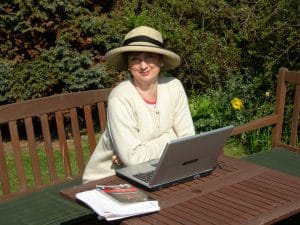 Thank you to author Natalia Richards for sharing this guest article with us today. Natalia is author of Falcon’s Rise, a novel focusing on Anne Boleyn’s very early life and her time at the court of Margaret of Austria. It is clear from this guest article just how much research Natalia put into her book.
Thank you to author Natalia Richards for sharing this guest article with us today. Natalia is author of Falcon’s Rise, a novel focusing on Anne Boleyn’s very early life and her time at the court of Margaret of Austria. It is clear from this guest article just how much research Natalia put into her book.
Over to Natalia…
As a museum curator, research has always been a large part of my life, and over the years I have spent many hours poring over documents, (white protective gloves on of course!) sitting in archives and reading rooms researching everything from chamber pots to ceramics. However, I was once advised by a very sage curator at the V&A museum that I must be very, very cautious of what I might read. To remember that ‘it ain’t necessarily so’. And those words have always stuck with me. I must look at everything from all sides and then make a judgement, since the writer often had an agenda depending on who they were writing for!
When it came to writing my novel, I wanted to make my book to be as factual as possible as I love to learn, even from novels. The more accurate the research, I find, the more believable and enjoyable the book. However, actually sitting down to write does not come easily to me as I like to be active – anything but sit still! Weekdays were out as I was working, and Saturday was my chores day, but somehow, miraculously, I managed to sit down and write every Sunday. It was a slow process, laptop on knee, and I would much rather have been out in the sunshine particularly as I then lived very close to the sea and a beautiful beach in the south of England. However, I did find I could lose myself in writing, and it was very therapeutic to put day to day concerns on hold, even for a few hours.
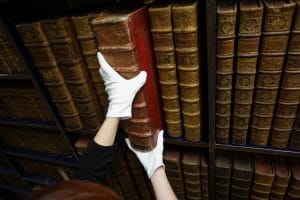 When I first began my research of the Tudors, over thirty years ago, I already had an extensive library of factual books. Now though, when I began this novel, it was an excuse to buy more, and I would spend hours scouring book sites, spending a fortune over the years. I bought everything that might give me an insight into the times. This was the fun part, the searching for new material. Shall I buy this? Yes, one-click – done! Every day a new book or pamphlet plopped through the door, and it was like Christmas.
When I first began my research of the Tudors, over thirty years ago, I already had an extensive library of factual books. Now though, when I began this novel, it was an excuse to buy more, and I would spend hours scouring book sites, spending a fortune over the years. I bought everything that might give me an insight into the times. This was the fun part, the searching for new material. Shall I buy this? Yes, one-click – done! Every day a new book or pamphlet plopped through the door, and it was like Christmas.
One of the first books I consulted was Edward Halls ‘History of England.’ Taking a date line of around 1498-1513, this gave me a framework to work within, allowing me to understand the Tudor politics and social background to when Anne was growing up. Another invaluable source which I used from the onset was the Calendar of State Papers, Foreign and Domestic. These are now available to read through ‘British History Online’ but when I first started reading them years ago, I had to visit the British Library, in London, travelling on the bus, to make notes. This Calendar is a wonderful resource, for here is an account of what happened and when it happened, and I would have been lost without it. I used it as a diary, page by page, to see what was happening abroad and at home, in manageable chunks from year to year. For this novel, I needed to cover about 15 years of it. I even kept printed pages in my bag to read in my spare moments, highlighting interesting parts. If I remember rightly, I believe Hilary Mantel found her title for her book ‘Bring Up the Bodies’ in the State papers. I recall seeing the phrase and thinking ‘aha, that sounds familiar!’
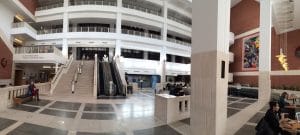
I also realised that I needed to know more about the people who surrounded Anne. I started to buy books and articles on the Howards, the Staffords, the Boleyns, Charles Brandon, Thomas Wolsey – just about everyone who came into her life. Before long I had a large library of reference books, pamphlets and articles and my huge bookshelves were soon three rows deep.
When I came upon a person in the story such as the Duke of Stafford, I contacted experts such as Professor Michael Brennan, Professor of Renaissance Studies at the University of Leeds to help me get my facts right. I also contacted Professor Ives and Dr David Starkey with questions. David Starkey advised me that on the more general picture of Anne’s youth, his impression was that the second version of Eric Ives book, ‘The Life and Death of Anne Boleyn’ was exhaustive, and that I should use it as a touchstone, which I did. I also contacted Izabel Pennec-Murphy, at Kilkenny Castle, who assisted me with the Butler family history and James the Lame. Mr John Kirwan and Melosina Lenox-Conyngham (now sadly died) also helped me with the Butler connection through her attachment to the Butler Society, the group that seeks to bring together around Kilkenny Castle the worldwide Butler community. I must say, I got side tracked with the Butlers for quite a few weeks!
Trying to find out more about Anne’s brother, Thomas, was very interesting, and I discussed the Thomas Boleyn memorial with Mr John Vigar on the Kent churches website kentchurches.info and the Rev Thomas Holme. Rev Holme kindly spoke to the De L’Isle family and the parish archivist to see if they could assist me in my research.
Some people replied, some didn’t, but the help I received from those who did was invaluable, for I soon had box files packed full of biographies, all stuffed under the bed or the sofa as I was running out of space.
When the easy to obtain books had been bought, I started to look at rarer sources. At the London Library, in St James Square, I would purchase £10 day passes and so was able to consult books, which at that time, were not available on the internet. Books such as Agnes Strickland’s ‘Lives of the Queens of England.’ Then there was John Lingard, an English historian, the author of ‘The History of England, From the First Invasion by the Romans to the Accession of Henry VIII’, an 8-volume work published in 1819. And JH Round (1854–1928) an historian and genealogist of the English mediaeval period who wrote his ‘Early life of Anne Boleyn – A critical Essay’ 1886. Volume Four of William Hepworth Dixon’s ‘History of Two Queens’ was also at this library. Would these books be useful? I had no idea until I went to have a look at them myself. Well, some were, others not but I read them regardless, taking copious photocopies in the library. Later I was able to buy the re-prints which made life a lot easier.
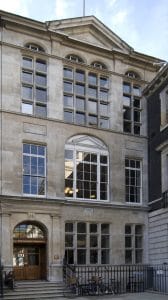
There were also exhibitions such as ‘Henry VIII – Man and Monarch’ – at the British Library, in London. A wonderful way to see documents and images. Seeing Anne’s handwriting led me on to look at other letters she had written, and I spent weeks on graphology trying to work out her personality traits from the style of her writing.
As well as researching, there were the actual places to find out about and on my days off I drove off with my camera. In England, I visited Richmond-on-Thames, the Tower of London, Greenwich, Hampton Court, Lambeth, Norfolk, Blickling, Walsingham, Hever, Edenbridge, Penshurst, Thornbury, Canterbury, Dover, and Rochford. Many I had visited before, but now I was on a mission, walking the villages and towns to get an idea of their geographical layout. What I found really useful was visiting the local record offices to find out more about the history of the areas I was interested in. For instance, I spent hours at Essex County Record Office, in Chelmsford, looking at records and maps of Rochford and the surrounding area, and visited Rochford Hall to see the hall and church. There I met Mr Maurice Drage who spent the day with me discussing the manor and history of the town.
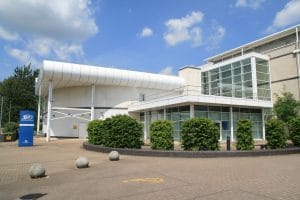
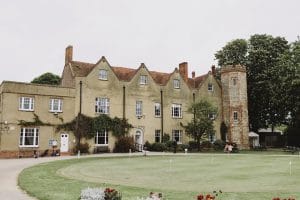
All the while I was juggling different strands of the story: The time frame, the political, geographical and religious situation, and the social background – I needed to know what clothes were worn, what things cost, how houses were built and a million other things. Everything had to be considered so that I could make my narrative sound authentic. I even ended up making my own time chart so that I could see things in parallel, and used a site that allowed me to calculate the day of the week at any given time. (people.albion.edu) This was turning into a much bigger project than I first thought!
Anne’s birthdate was a complicated issue, and I changed my mind a hundred times before settling on 1500. I also contacted Ken Ward, astrologist, who explained about the Julian and Gregorian calendar, and he told me that unless the date given for her execution had been translated into the Gregorian system, she was most certainly a Gemini, with the sun in that sign at that date. I spent weeks consulting charts and I am grateful to Ken for his assistance.
When it came to Mechelen, I realised that I could not write about Anne’s time there without seeing the city for myself. I wanted to see the actual distance between places, to walk the routes taken in my book, and to get an idea of where things were. To my absolute horror, I had missed the exhibition ‘Women of Distinction: Margaret of York & Margaret of Austria’, held in Mechelen in 2005. Both the exhibition and the catalogue highlighted an important aspect of Burgundian culture: the impact of noble women on life at the court and in the city around 1500. The study took a fresh look at the transition from the late Middle Ages to the early modern period and offered the reader essential information as well as new insights into matters of gender and female concern. Fortunately, I was able to track down a copy of the hardback catalogue, but it was not cheap at 60 Euros. Now, I believe it is unavailable.
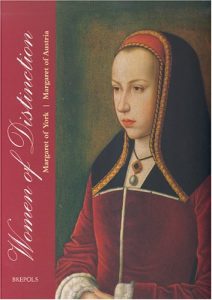 I then wrote to the tourist office to see if someone could help me, and I was immediately put in touch with two city guides. I took the train from London to Brussels, and a short connection later, I was in Mechelen inside the palace of Margaret of Austria. I was allowed to take photographs and to wander through the many rooms, usually not allowed. Afterwards, as it was a chilly October day, I’d sit with my guide discussing Anne Boleyn and Margaret of Austria over hot chocolate and cake.
I then wrote to the tourist office to see if someone could help me, and I was immediately put in touch with two city guides. I took the train from London to Brussels, and a short connection later, I was in Mechelen inside the palace of Margaret of Austria. I was allowed to take photographs and to wander through the many rooms, usually not allowed. Afterwards, as it was a chilly October day, I’d sit with my guide discussing Anne Boleyn and Margaret of Austria over hot chocolate and cake.
Moving on to the city archive stores, it is here that the archivists manage information in word and image about Mechelen and its citizens, and I was able to study maps and drawings. For anyone interested it is at the following address: G. de Stassartstraat 145, 2800 Mechelen but you can check it out on Facebook too.
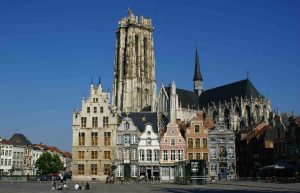
It was Jane Apps at Hever Castle who informed me that in 2009, the letter Anne’s father had written to Margaret asking for Anne to be released from her service was now in Lincoln Cathedral. It had been donated by the opera singer, Jane Eaglen.
Not knowing my way around the city, my guides also took me to various bookshops. Although not in English, maps, drawings, engravings of waterways and palaces in Mechelen had to be purchased and somehow carted back home in carrier bags. Goodness knows where I was going to put them all.
It was here in Mechelen that I learnt of its different culture to England, how it was more tolerant and forward thinking, and a wonderful place for Anne to be. Of course, I was led on to Margaret of York and became fascinated by her story. Again, I wished to study the people about Anne, such as the Emperor Maximilian, Prince Charles (later Charles V who championed Queen Katherine) and the people of Margaret of Austria’s household. One person might take me several months to study – but it was fun to find out more about these characters. In fact, if I had not studied Anne’s early years, I would never have read about the Emperor, or for that matter Margaret of Austria. In my recent talk, several people said they would now find out more, as they, too, had not been aware of her story or link with Anne Boleyn.
Finally, when I started writing, the Tudors were not as popular as they are today. Even in a few short years, television programmes such as ‘The Tudors’ have caused a rise in the interest in Anne Boleyn. Whatever the thoughts on such drama, if it leads to interest in this subject then it has done its job. Now, many more books are available, and new information and thoughts are discussed on such excellent websites as this. I love the research side of writing, but it still means I have to buckle down and get on with the actual story.
When I first began writing, I decided that this would be a trilogy: ‘Falcon’s Rise’ ‘Falcon’s Flight’ and ‘Falcon’s fall’. It would be lovely if I could complete this as a box set. But to do that I suppose I had better get on with the second book.
The Falcon’s Rise
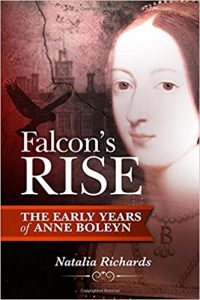
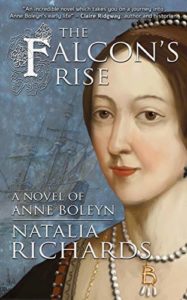
Blurb:
The day before her execution, Anne Boleyn’s mind wanders back to the journey that changed her life…
Born into the Boleyn family in rural Norfolk, obscurity looms, but when Anne’s father, Thomas, moves the family to Hever Castle, in Kent, to further his own interests, the family’s fortunes take a turn for the better. Thomas secures a place for Anne’s sister, Mary, at the prestigious court of Margaret of Austria, but fate has other plans, and Anne ends up taking her place.
At thirteen, Anne yearns for adventure. However, unused to curbing her outspoken tongue and youthful curiosity, she discovers that life at Margaret’s court is not quite how she’d imagined. Experiencing love, loss, jealousy and fear, she soon realises that her future happiness lies in her own hands – and that she must shape her own destiny…
The Falcon’s Rise is the first part of a two-part series, beginning the journey with the young Anne Boleyn growing into the woman who captured the heart of a king.
Click here to find the book on your country’s Amazon store. It’s available as a kindle ebook or paperback.